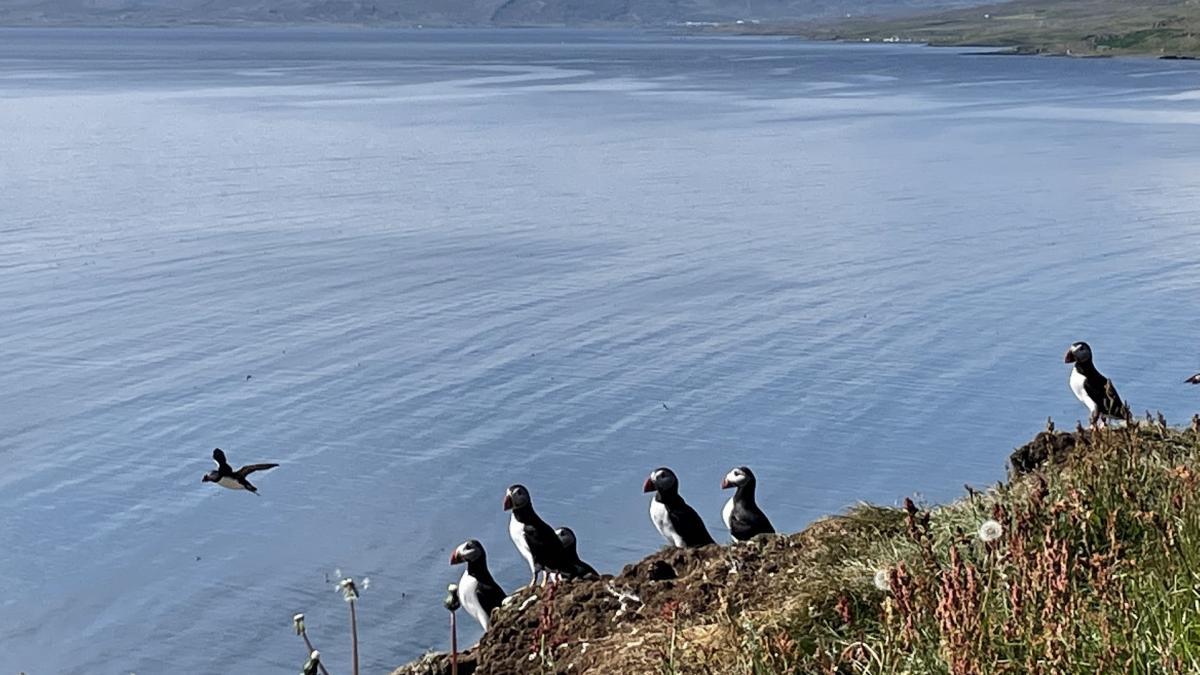Free and exclusive discount codes for hundreds of tours and & travel services in Iceland
Subscribe to instantly receive discount codes for tours, car rental, camper van rental, and outdoor clothing rental. Thank you! ❤️ Jon Heidar, Editor of Stuck in Iceland Travel MagazinePuffins fascinate many. These beautiful birds are not only pretty. They are fantastic swimmers and hunters who brave the perils of the North Atlantic to breed and feed their young. I find puffins delightful to look at, although my favorite bird is the hardy raven. But perhaps we should not have favorite birds or animals; we should agree that we must protect Earth, the only habitat birds, animals, including humans, have.
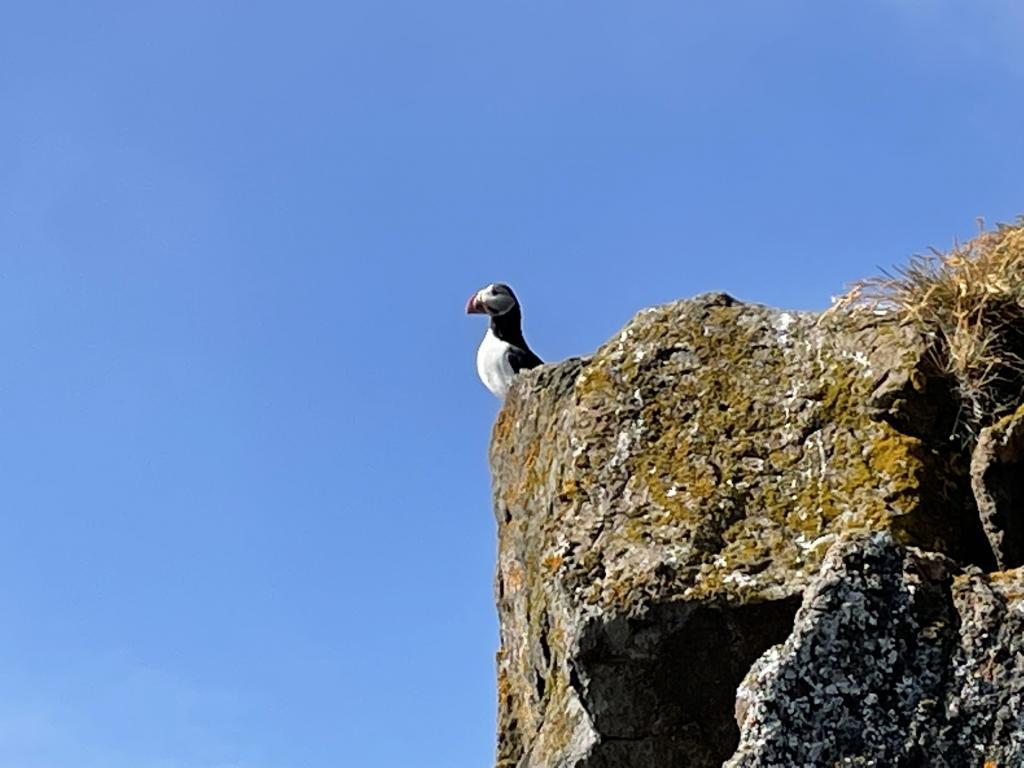
One way of doing that is carbon offsetting our traveling. One major habitat that the puffins in Iceland have is the remote island of Grímsey, which I suppose you can call puffin island. In the summer you are sure to see a lot of puffins and other sea birds. Make sure you don’t confuse this Grímsey in the Westfjords with the island of Grímsey far north of the town of Akureyri.
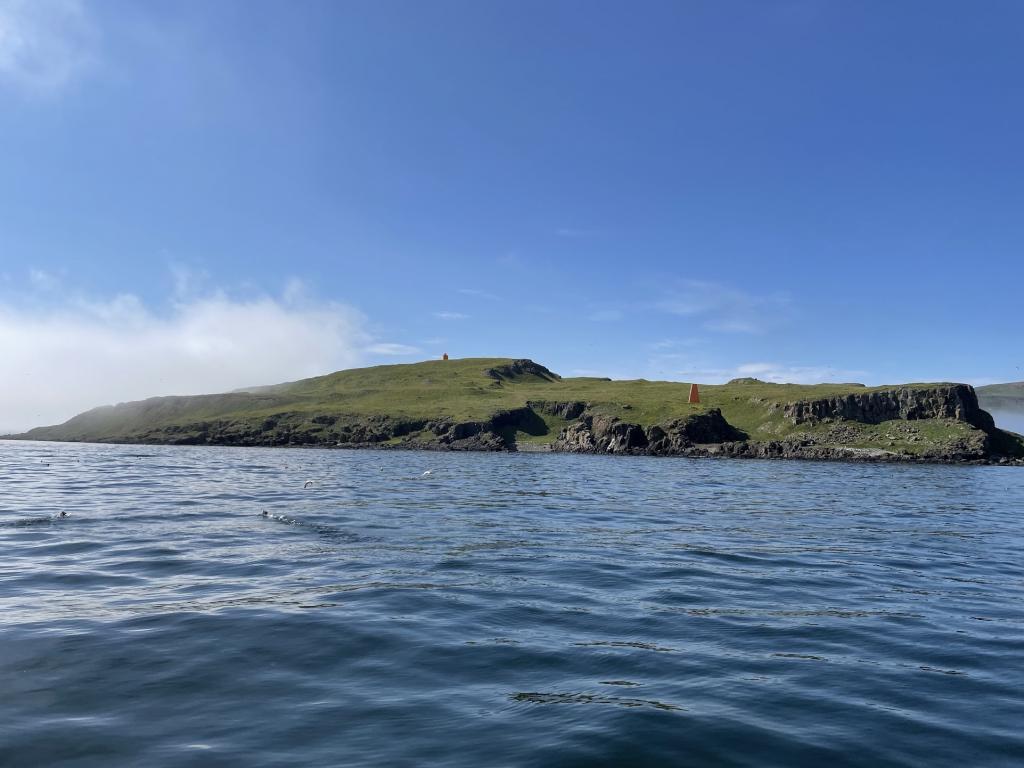
Heading to the Westfjords
Last summer, I had the excellent fortune of joining my wife on a road trip to the northern Westfjords. She was invited to sing at a concert to commemorate the 100 birth of the renowned Icelandic composer Sigvaldi Kaldalóns. The concert was to be held near his former home of Kaldalón at the Dalbær guesthouse. A road trip to the Westfjords is always delightful.
Listen to Hallveig Rúnarsdóttir and her accompanist Böðvar Guðmundsson perform Næturljóð úr fjörðum (Night Poem from fjords) by Icelandic composer Sigvaldi Kaldalóns
Rustic hotel complete with a large swimming pool and natural pools
Hotel Laugarhóll was our first stop on our road trip to Snæfjallaströnd. This is a rustic countryside hotel in a converted school. The highlight there was to swim in the large pool next to the hotel building, soak in the rocky natural pools beside the swimming pool, and discover a pool from the middle ages blessed back in the day by the controversial medieval bishop Guðmundur the good.
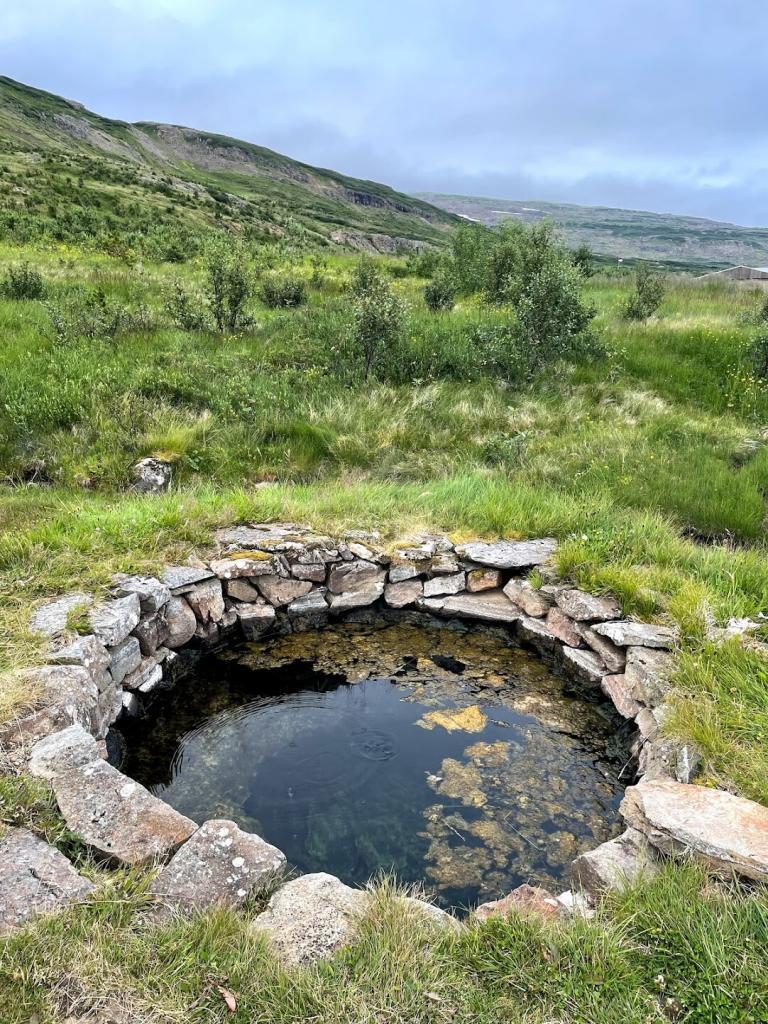
The rich and powerful despised him and would have called him something else than “the good.” The poor loved him, though. Nearby is a turf house that is being repaired.
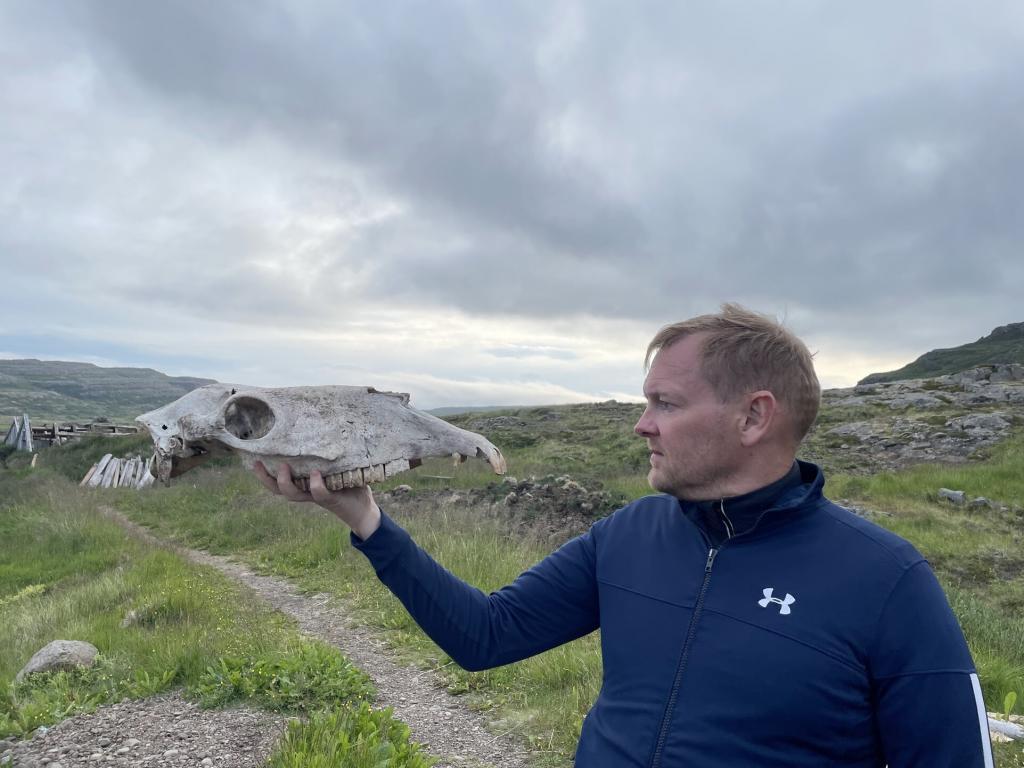
It used to be the Sorcerer’s Cottage, a tribute to the past practice of sorcery which is supposed to have been commonplace in the Westfjords in the 17th century.
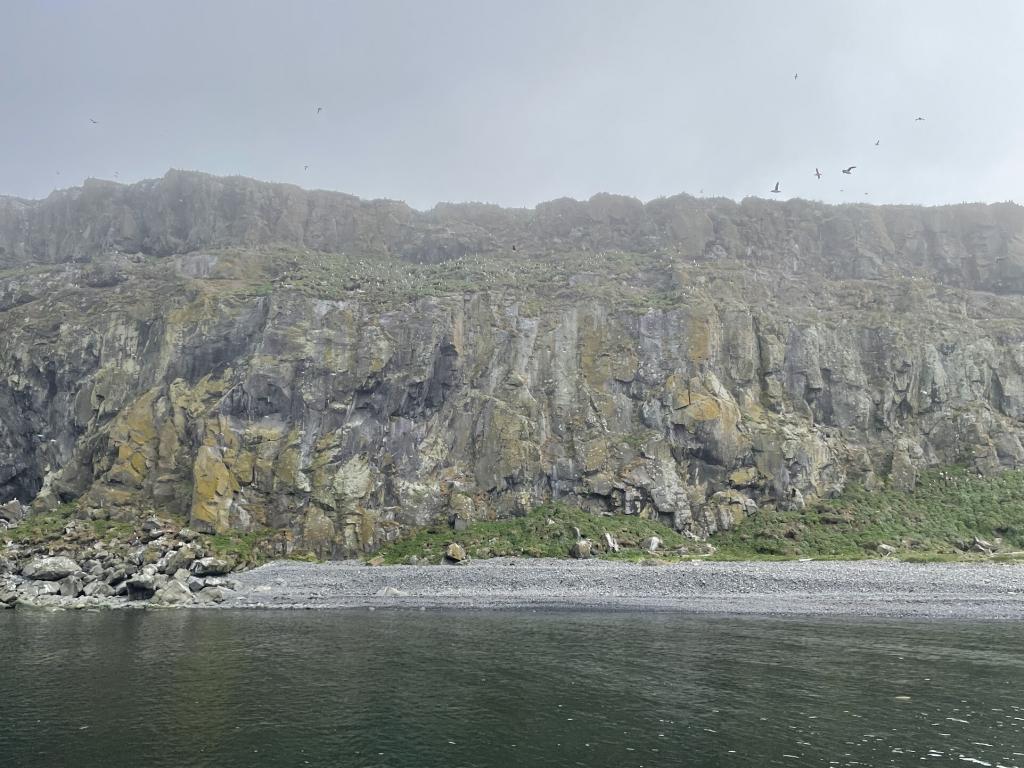
Hello eighties rockstar, please take me to puffin island
We drove to the village of Drangsnes by Steingrímsfjörður fjord, and from there we were able to board a boat which took us to a destination I was excited about, Grímsey.
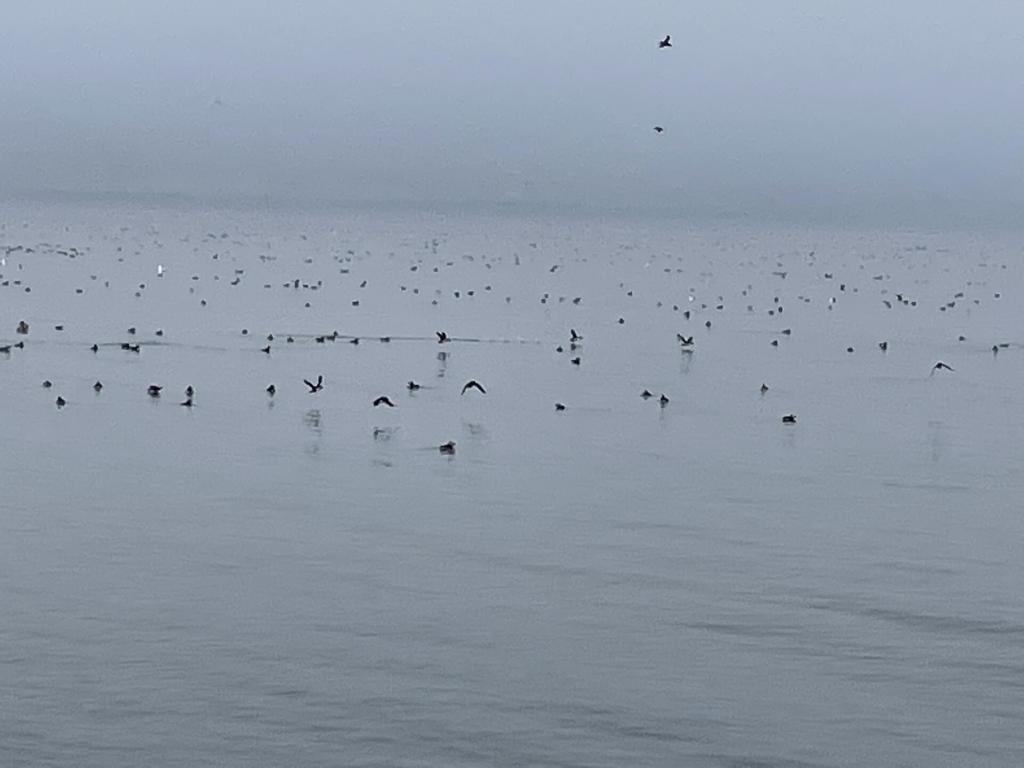
Our guide on Grímsey Island was no other than Icelandic music legend Magga Stína who once was a member of the Icelandic Avant-garde band Reptile. That band once belonged to a clique of Icelandic artists in the eighties and early nineties, including the Sugarcubes. Other noteworthy members include the rock legends Ham and the ex-mayor Reykjavik Jón Gnarr. It was fantastic to meet her there and join her on tour serendipitously. My wife, Hallveig Rúnarsdóttir and Magga Stína, know each other quite well. It was a meeting of two Icelandic music legends.
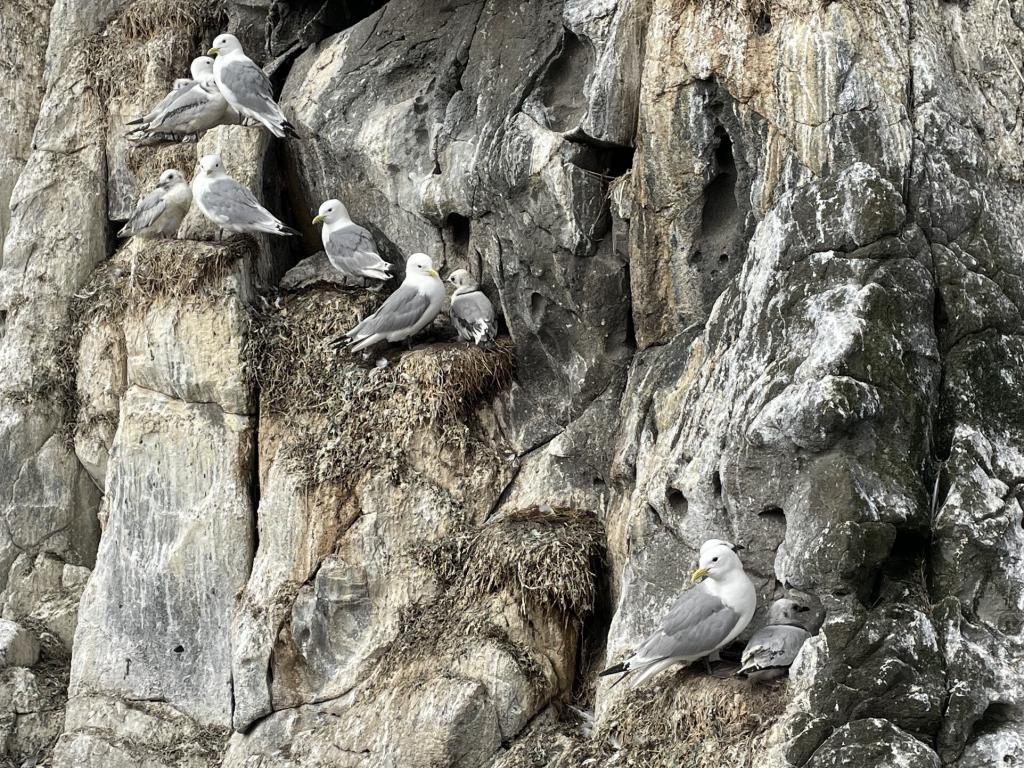
Escapades of the fox
Magga Stína is a fun and quirky guide who introduced us to the teeming birdlife on the island. She also told us about the fox breeding program on the island. It all went well until the fjord froze over in the extreme winter of 1918, and the foxes escaped. Their descendants are probably all over the place now; after all, we were not too far from Hornstrandir, where the arctic fox reigns supreme.
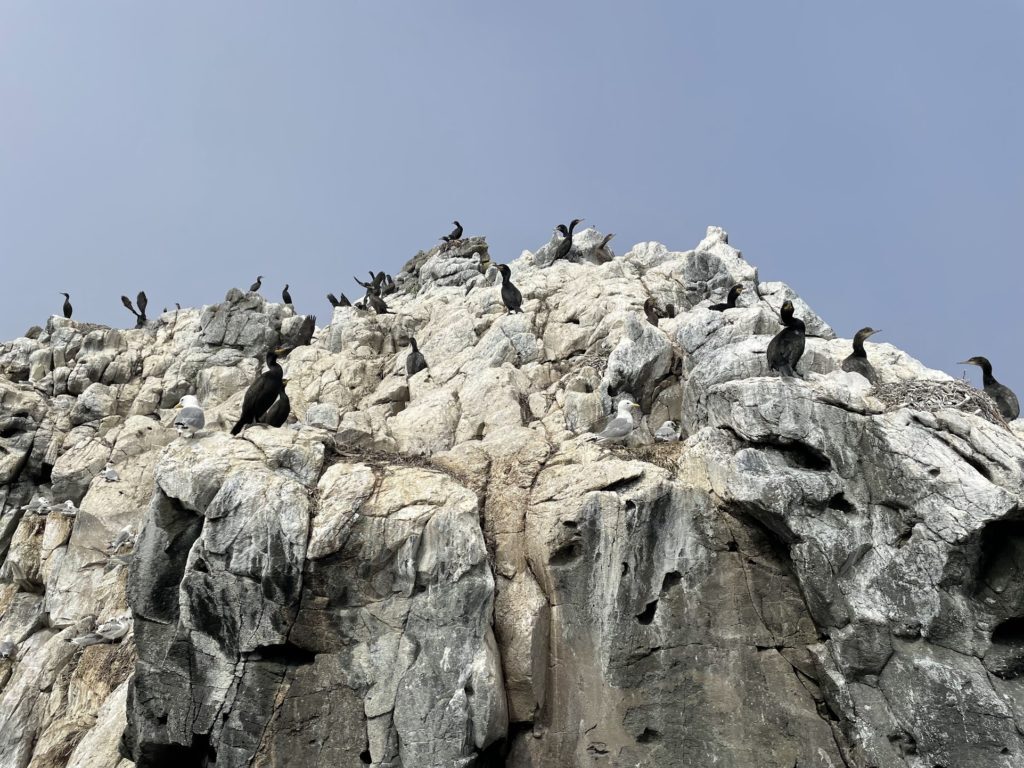
World war 2 comes to puffin island
She also told us a war story. In world war two, a young shepherd watched a German plane attack and destroyed the lighthouse on the island. The New York Times reports on the attack on the 6th of August 1942. It claims that minor damage was done, which is inconsistent with what we know now.

A little mystery from World War 2
Attacking a remote lighthouse in the west of Iceland was not a significant event in World War 2, but I would have loved to know more. I find it strange that a pilot of a German plane would venture this far from his base, presumably in occupied Norway, fly all this distance and then decide to attack a lone lighthouse in the middle of nowhere. Perhaps he wanted to have something to show for his long flight and decided to strike a target with no chance of somebody shooting back. Maybe he got a medal or got told off by his commander. Who knows.
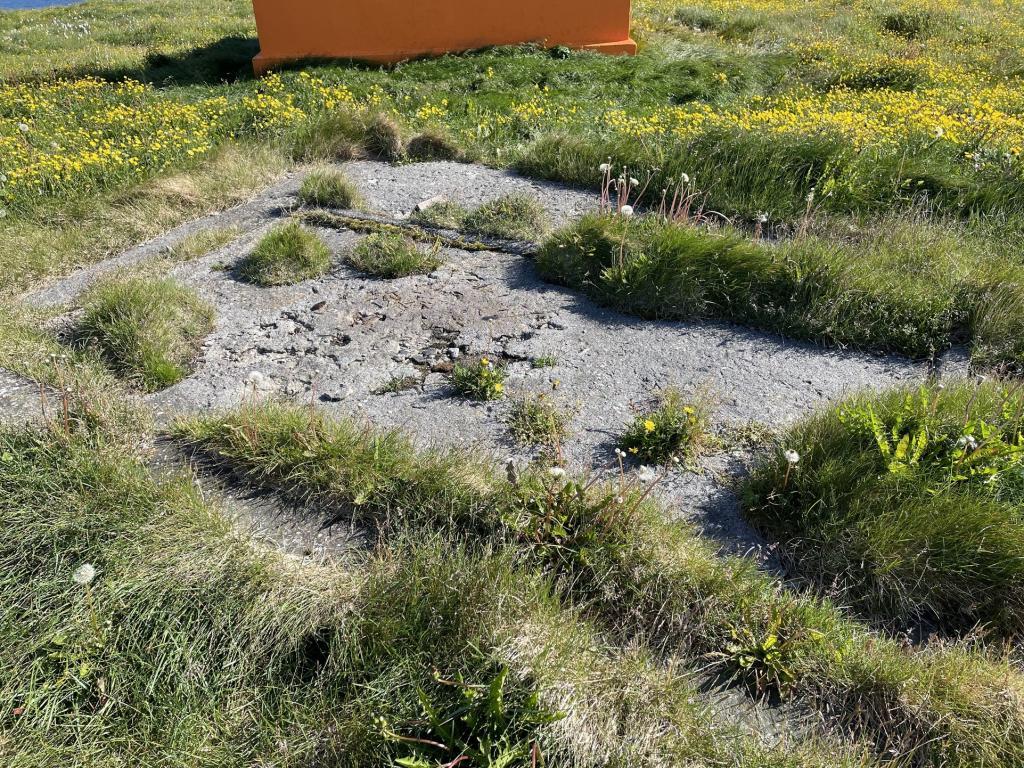
Impressive birdlife
I digress. Grímsey is particularly noteworthy for its teeming birdlife. Thousands of puffins surrounded the boat as we approached the island.
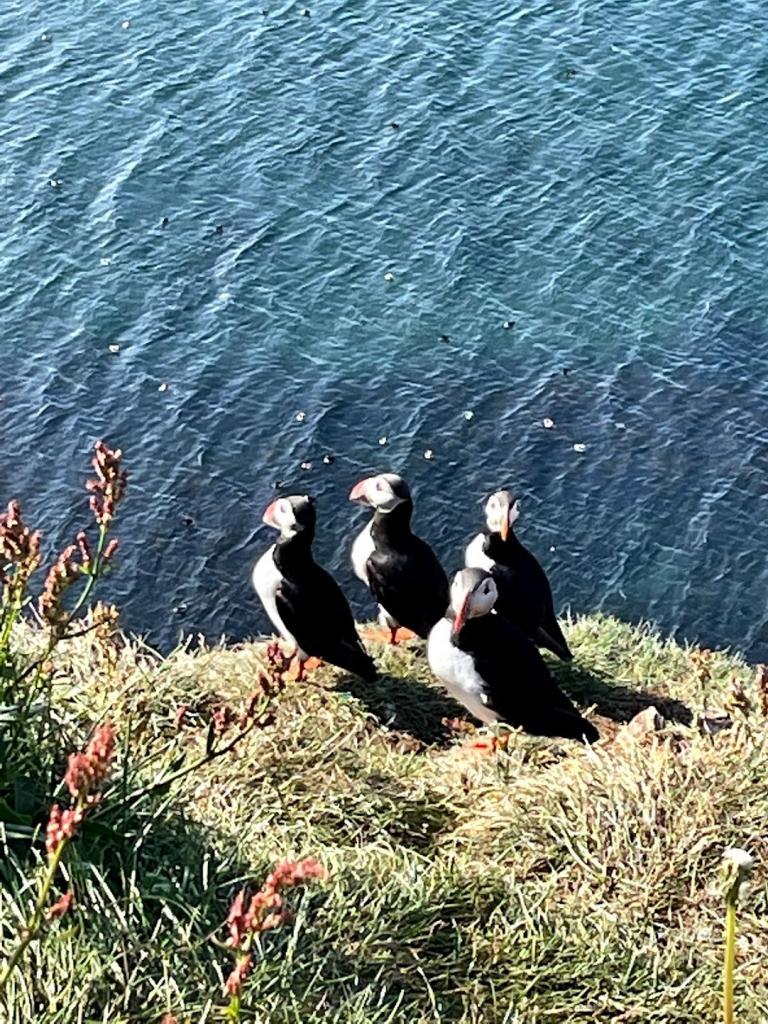
It was fascinating to see them fly, swim or dive underwater. Just before the captain landed, they took the boat close to the rocky island, and in the cliffs by the sea, Shags and seagulls competed for space. When the captain had landed the boat, and we had gone ashore, we saw that the whole island was teeming with puffins. There must be tens of thousands of them on Grímsey, and they were so photogenic on this beautiful summer’s day.
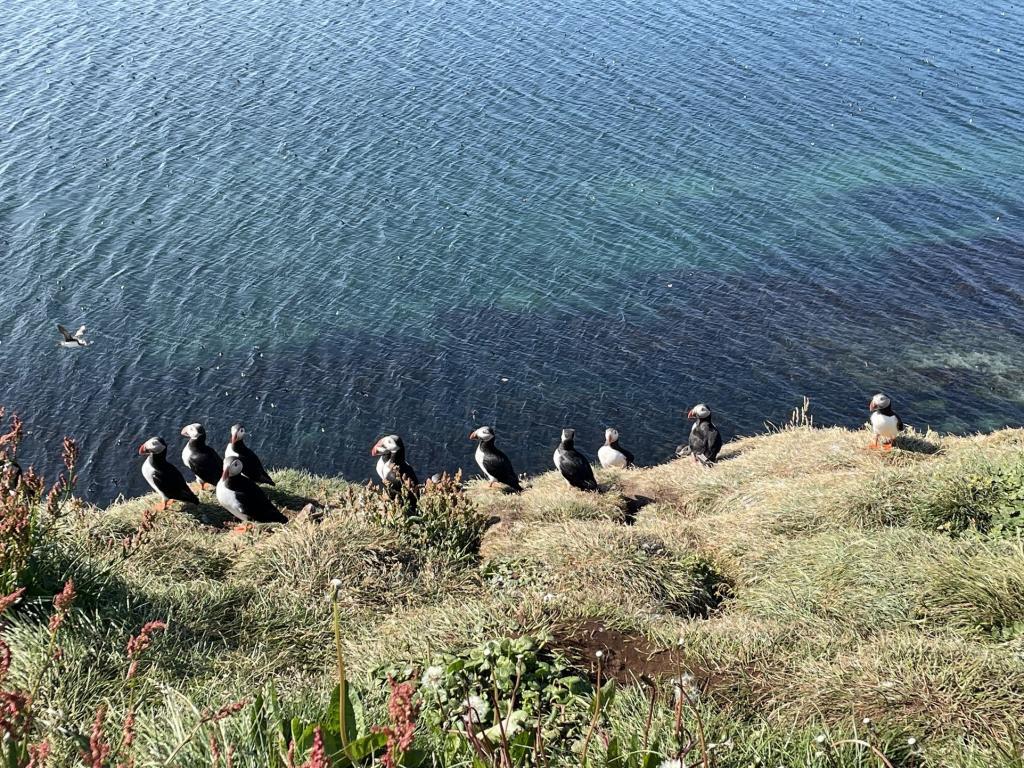
Puffins kept their cool
We spent a lot of time photographing puffins, and they did not seem to mind us all that much. If you just moved slowly and quietly, you could get close. But you could see that they knew very well we were there. Sudden moves and noise would prompt them to fly away. The whole island is uneven with thick grass. There are hidden puffin holes in some places, so you have to mind your step. We walked quite a long way, enjoying the birds and the view. Then we came to the “new” lighthouse, built in 1949. Just beside this lighthouse, a concrete floor and some pieces of metal are all that remain of the old lighthouse, which met its untimely wartime fate. But as a surprising bonus to the people who joined us on the tour, Hallveig and Magga sang in the lighthouse, making full use of its great acoustics.
Goodbye eighties rock star
On my way back, I speculated to Magga Stína that grassy knolls were so regular that they had to be artificial. I said this half-jokingly, but since people have been living in the Westfjords for at least one thousand years, who knows. Magga Stína had decided to spend a few days alone in Grímsey. It would just be her and the birds.
How to get to Grímsey island in the Westfjords
Go to the village of Drangsnes. Join a trip with a provider such as West Tours.
,


